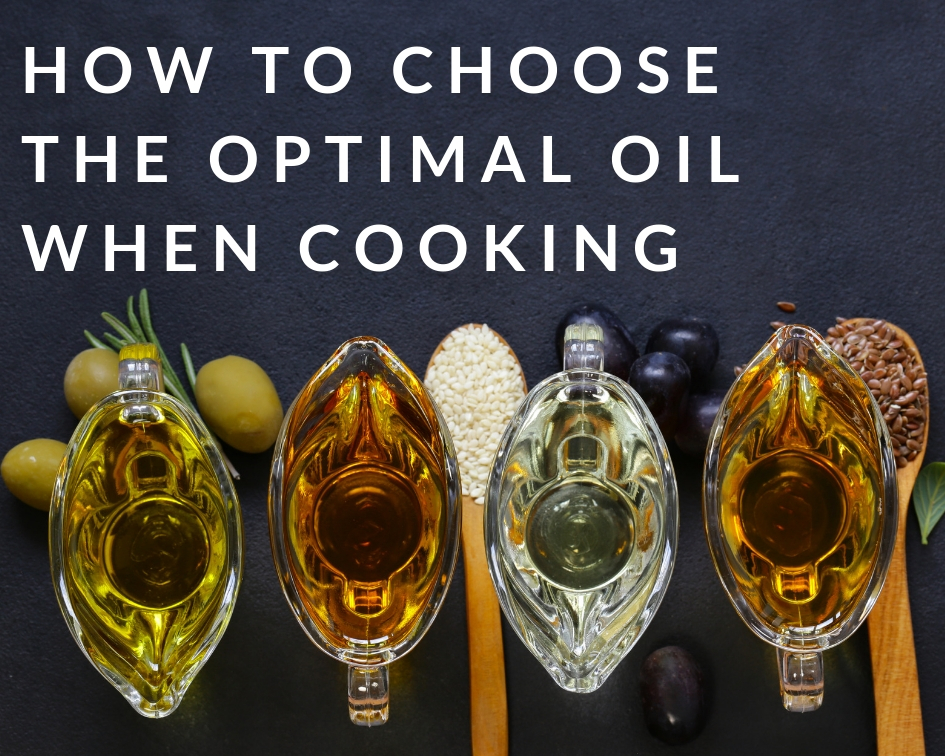When walking down the cooking oil aisle at the supermarket, it’s hard not to get overwhelmed. Olive, grapeseed, avocado, coconut… which one should be added to the cart? Some oils have a high smoke point which means they’re great for frying, while others, with a low smoke point, will just burn and become rancid if cooked too long. The smoke point is the temperature at which an oil starts to burn. With so many oils to chose from, choosing the right one can be difficult. We’ve gathered information on some of the more popular kitchen oils.
Avocado Oil
With a high smoke point, avocado oil is great healthier oil for cooking. It’s high in monounsaturated fats (the good fat) and vitamin E. It has a high smoke point (520 degrees) which means it can be used for just about anything – sauteeing, baking, searing, vinaigrettes, etc.
Canola Oil
Very versatile and similar to vegetable oil in flavor and color. It’s lower in saturated fat than other oils. Most commonly, this oil is used in general cooking and baking (up to 420 degrees).
Coconut Oil
Even though it’s nearly calorie free, coconut oil is high in saturated fat. When cold, coconut oil is solid which means its uses are limited. It also has a very low smoke point (350) so it’s not good for things that are deep fried. It is best for baking when looking to make non-dairy baked goods.
Corn Oil
With a natural flavor and low price point, corn oil is used for frying in commercial kitchens. Corn oil is an ingredient in margarine. This is best to use for frying, stir-fry and to coat proteins before grilling (do not use if cooking higher than 450 degrees).
Grapeseed Oil
Extracted from seeds of grapes, grapeseed oil is popular among chefs for it’s clean, light flavor. It’s a great base for infused oils. It also works for homemade salad dressing and sauteing meats or vegetables. It is sensitive to high heat and should not be used for frying.
Olive Oil
There are two types of olive oil – Light and Extra Virgin. Light olive oil has a higher smoke point, lighter in taste and color. Extra Virgin is robust in flavor with a lower smoke point. Great for salad dressings, creating pestos, sauteing vegetables, and searing meat.
Peanut Oil
Featuring almost a sweet flavor, peanut oil is pressed from peanut kernels. It is low in saturated fats, however high in calories. Typically, it’s used in deep frying (up to 450 degrees), stir-fry and for sauteing. Do not use peanut oil if preparing a meal for someone who has a nut allergy.
Sesame Oil
With a distinctively nutty smell and taste, sesame oil is mainly used in Asian and Middle Eastern cuisine. Once opened, it’s best to store this in the refrigerator or it will get rancid. Try sesame oil drizzled over stir-fry. It’s very flavorful, so a little goes a long way.
Sunflower Oil
Pressed from the seeds of a sunflower, this oil is very versatile. It’s light in taste and high in vitamin E. It’s becoming more commonly used when looking for a “healthier” oil because its flavor won’t take over the dish. Sear fish or saute vegetables with sunflower oil. However, do not use if cooking about 450 degrees.
Vegetable Oil
Extracted from various seeds, vegetable oil is a neutral, all-purpose cooking oil. With a smoke point of 400 degrees, it can be used in cooking (like sauteeing and frying), salad dressings, and baking. However, it is highly processed and should not be used all the time. For cooking, olive oil is a great substitute. For baking, sub canola oil.
To keep this information handy while cooking, click here to find and print our infographic on choosing the optimal oil.
